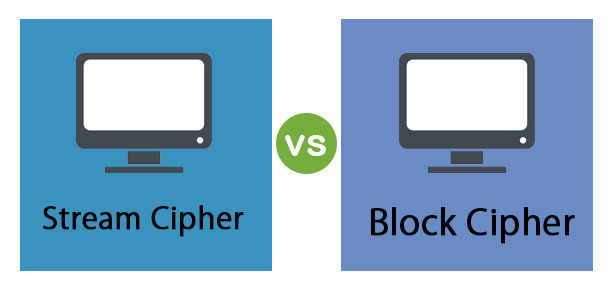Updated March 17, 2023

Difference Between Stream Cipher vs Block Cipher
In this article, Stream Cipher vs Block Cipher, both stream Cipher and block cipher are techniques used for encryption and decryption, i.e. to convert the plain text to ciphertext and cipher text to plain text. Both methods have their purpose and methods. Both techniques are used for the same purpose, but there is a difference in their methods and work. We are also going to discuss the difference between stream cipher and block cipher. A stream cipher is a technique that involves the encryption of one plain text bit at a time. The decryption is also proceeded by one bit at a time.
A block cipher is a technique that involves the encryption of one block of plain text at a time. The decryption is also proceeded by one block at a time. So basically there are two most popular types for encryption and decryption of the text. Block Ciphers encrypt the entire block. Stream Ciphers encrypts by Taking one digit/element continuously and produces output one element at a time. A block cipher can be created from a given stream cipher by just encrypting a whole block with the stream cipher, but a stream cipher from a block cipher cannot be created.
Head to Head Comparison Between Stream Cipher vs Block Cipher (Infographics)
Below are the Top 11 comparisons between Stream Cipher vs Block Cipher:
Key Differences Between Stream Cipher vs Block Cipher
Let us discuss some of the major key differences between Stream Cipher vs Block Cipher:
- In a stream cipher, the encryption is done bit by bit, whereas, in block cipher, it is done block by block.
- In a stream cipher, the decryption is also done bit by bit, whereas, in block cipher, it is done by block by block.
- Stream cipher relies on substitution techniques like Caesar cipher, modified Caesar cipher, monoalphabetic cipher, homophonic cipher, polygram substitution cipher, polyalphabetic cipher, Playfair cipher, and hill cipher.
- Block cipher relies on transposition techniques like rail-fence technique, columnar transposition technique, Vernam cipher, and book cipher.
- Stream cipher uses confusion to ensure that it doesn’t give clues about the plain text, whereas block cipher uses both confusion and diffusion.
- A stream cipher is faster than a block cipher, whereas a block cipher is slower.
- In a stream cipher, one key is used for one time, whereas in a block cipher, the key can be reused.
- Stream cipher requires less code than block cipher.
- Stream Cipher doesn’t consist of a complex algorithm or process as a Block Ciphers.
- It is simple to implement Stream cipher in Hardware than that of Block cipher.
- Redundancy is less in stream cipher, whereas block cipher increases the redundancy.
A stream cipher is used for SSL secure connection for web whereas block cipher is used for database, file encryption. - Encryption can be implemented bit by bit in stream ciphers and instantly when new data is available for processing, so an incoming bit will automatically generate an outgoing bit without buffering the input. On the other hand, block ciphers require a complete data block by applying a padding scheme to be collected before the first output bit can be generated.
Comparison Table of Stream Cipher vs Block Cipher
The table below summarizes the comparisons between Stream Cipher vs Block Cipher:
| Basis of Comparison between Stream Cipher vs Block Cipher | Stream Cipher |
Block Cipher |
| Encryption Process | It encrypts one bit of plain text at a time. | It encrypts one block of plain text at a time. |
| Decryption Process | It decrypts a bit of plain text at a time. | It decrypts one block of plain text at a time. |
| Confusion and Diffusion | Stream cipher uses only confusion. | Block cipher uses both Confusion and diffusion. |
| Techniques Used | It uses substitution techniques. | It uses transposition techniques. |
| Speed | It is faster than block cipher. | It is slower than stream cipher. |
| Scope of Redundancy | There are no chances of Redundancy. | It increases the redundancy of plain text. |
| Source of Code | It requires less code. | It requires more code. |
| Algorithm Modes | It uses Electronic Code Block (ECB) and Cipher Block Chaining (CBC). | It uses Cipher Feedback (CFB) and Output Feedback (OFB). |
| Use of Key | One key is used only one time. | One key can be used multiple times. |
| Implementation | It is widely used for hardware implementation. | It is suitable for software implementation. |
| Example | OTP (One Time Pad). | DES (Data Encryption Standard). |
Conclusion
So in this article, we have seen how to stream cipher vs block cipher works and how they are different with key points. I hope you will find this article helpful.
Recommended Articles
This is a guide to the top difference between Stream Cipher vs Block Cipher. Here we also discuss the Stream Cipher vs Block Cipher key differences and the comparison table with infographics. You may also have a look at the following articles to learn more –

